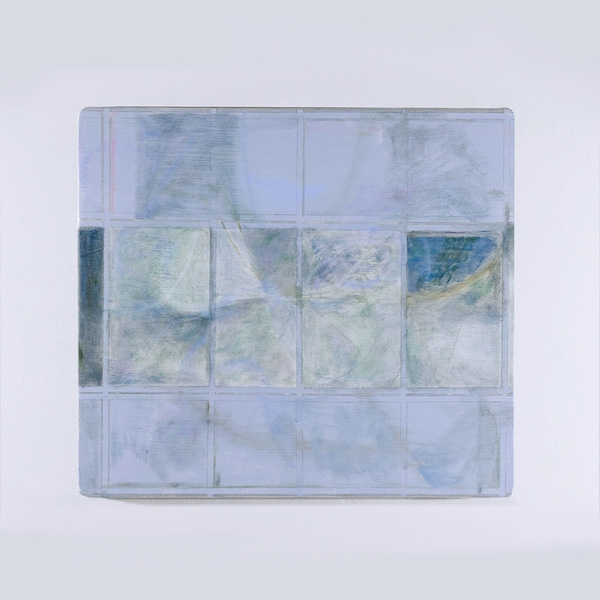Inside On Intimacy, currently on view at the evocative Abattoir Gallery in Cleveland, Ohio, viewers are called to contemplate the implications and transformative potentials that nestle at the intersection of intimacy and all 16 artist's intimate acts of image-making. On view until April 14, 2024, On Intimacy includes works by Amani Williams, Audra Skuodas, Chen Peng, Emily Bartolone, Jen P. Harris, Laura Ruth Bidwell, Mamie Tinkler, Nydia Blas, Roger White, Scott Olson, Shaun Pierson, Sophie Schwartz, and TR Ericsson.
The following interview is a conversation with Julia Callis, Carmen Winant, and Ang Zhang, three other artists also showing works in On Intimacy, which aims to probe at the complexities of personal relationships within each artist's process of making and, simply, the act of being intimate itself.
Callis, Winant, and Zhang's insightful perspectives extend beyond thoughts that define the show's theme as merely a physical act; rather, their answers shed light on the interpersonal dynamics, interactive and social effects, and numerous other multifaceted intricacies that surround the impact and meaning of intimacy. As defined by the American Psychological Association, "Intimacy' is an interpersonal state of extreme emotional closeness such that each party's personal space can be entered by any of the other parties without causing discomfort to that person. Intimacy characterizes close, familiar, and usually affectionate or loving personal relationships and requires the parties to have detailed knowledge or deep understanding of each other."
Carmen Winant reflects on the intertwining of intimacy within her role as a mother, highlighting the closeness experienced within familial bonds and the permeation of personal life that inform her photographic sculptural works. From her home studio, Winant's creative processes intertwine with the notion of nurturing and attending to her children, lending to a natural and personal exploration of social relationships, as well as an activated practice in radical coalition building.
Julia Callis explores the complexity of intimacy at the initial spark of creativity, as well as throughout her susceptible journey of bringing an idea to fruition. With her use of paint, Callis uncovers the discomforts of translating abstract ideas into recognizable iconography and ultimately forges unique connections with her original subjects, and new creations alike. Navigating emotions of excitement and vulnerability while painting, she produces intimate portrayals of ideas she has close relationships to, even ones impossible to engage with in reality.
Throughout the interview, Ang Zhang expresses a sense of wariness towards a potential dilution towards intimacy on a larger scale yet delves into the complexities of human connection with keenness and kindness. She discusses the various forms of expressive contact found within her process, which involves a multi-layering of different compositions, which gradually coalesce as one image-rich and anchored painting. Weaving her own interpretation of touch into a candid reflection on the evolving nature of intimacy within art and object making, Zhang notes: "Touch for me always feels like a verb more than it does a noun because it carries an impulse behind it."
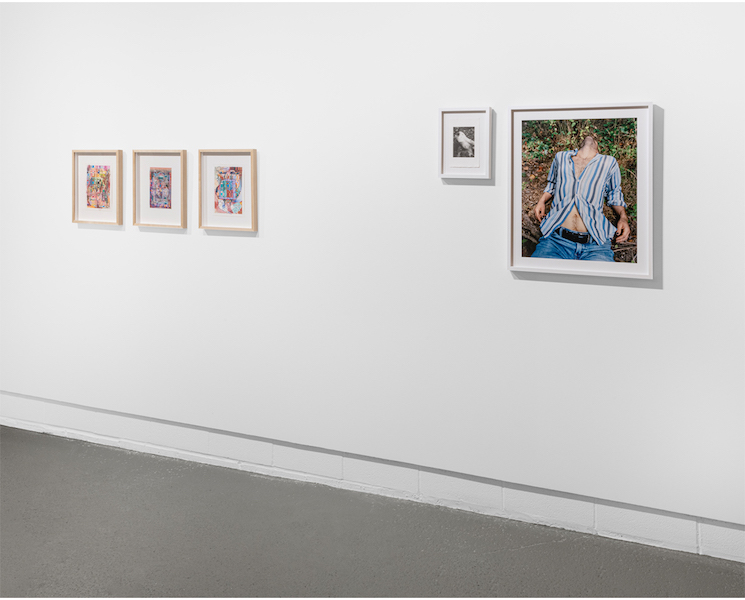 Installation view. On Intimacy at Abattoir Gallery, 2024. [L-R] Jen P. Harris - Untitled (series), 2023. All colored pencil and laser printed grid on paper; 11 x 8 in. / Shaun Pierson - Untitled (Trail), 2022. Archival pigment print mounted on dibond. 24 x 20 in. Edition 1 of 3 + 2AP. Photo courtesy of Field Studio.
Installation view. On Intimacy at Abattoir Gallery, 2024. [L-R] Jen P. Harris - Untitled (series), 2023. All colored pencil and laser printed grid on paper; 11 x 8 in. / Shaun Pierson - Untitled (Trail), 2022. Archival pigment print mounted on dibond. 24 x 20 in. Edition 1 of 3 + 2AP. Photo courtesy of Field Studio.
Many Facets Of Intimacy
Clare Gemima: Recently, prior to experiencing On Intimacy in person, I had been reading Abattoir's exhibition text: "On Intimacy highlights a group of artists whose practice touches on the intimate and ideas of intimacy." From this particular sentence, I became fixated on the use of the word touch, as it functions as both a noun and a verb. For each of you, how do you believe the term intimate differs from the ideas that surround 'intimacy' itself?
Carmen Winant: Intimacy feels like it moves beyond the physical. There is a closeness in that word, one that indicates it is not an idea but an act. Because I am a mother and have two small children, so often intimacy – as an idea and behavior – extends into that realm in ways that are difficult to describe. It is erotic but not sexual, tender, and joyful, but also exhausting and boring.
Ang Zhang: I enjoy painting because it indexes different modes of touching. There is the expected touch of the painter's hand through the brush, but I like interjecting different kinds of mediated touching/contact like image transfer, screen printing, and tracing. Calligraphic writing and rubbing feel like different kinds of touch as well. Touch, for me, always feels like a verb more than it does a noun because it carries an impulse behind it, and painting feels like a meaningful site for touching because the quality, intention, and meaning of the touching are foregrounded.
Julia Callis: Intimacy feels more personal or owned, transcending the simple idea of touch. You can be intimate with an object or a person, or a space, but so much of that feeling is achieved within rather than relying on the shared aspects of the experience and its physicality. There is a true sense of vulnerability within intimacy that contains much more of the introspective self than I believe gets credit.
Clare Gemima: How has 'intimacy,' defined as "a close familiarity or friendship; closeness," "an intimate act, especially sexual intercourse," or "a private cozy atmosphere," infiltrated your time making or thinking in the studio - internally, outwardly, with or without it?
CW: My work is informed by intimacy in variable ways, particularly as it comes to my life as a mother. My studio is at home, in our converted garage; I made it this way so I could work while my kids were little and I needed to breastfeed all the time. What could be a more intimate act? Ultimately, my world with them bleeds over into the substance of my work, intent as it is on centering social relationships and radical coalition building.
AZ: I feel wary of how watered down or polite the word intimacy has become, at least how I've encountered it. I think this is because of my own relationship to and yearning for intimacy through all different avenues - familial love, sex, and romantic relationships. No matter where I seem to find it - on a dancefloor, being infatuated with someone, reading, making work - intimacy is always symptomatic of a deeper desire. Maybe feeling less lonely. Maybe a condition of the times we live in. Maybe control?
In the studio, I think I let my guard down. The work penetrates my psyche! I beat it up, and it beats me back up in return. The paintings are more rewarding when viewed up close. I don't know if this is the "right kind" of intimacy, but it's the way I've operated for years now.
JC: The way I experience intimacy with my work feels quite complex. There is excitement or eagerness to create a new work and bring an idea to life, but there is also discomfort, such as "I don't know you yet." I'm sure this is not uncommon. A contained idea within your head can feel very unfamiliar once it leaves. It is so very difficult to recreate an actual feeling, expression, or experience, and because of this, I actually experience a loss of intimacy with my work as it approaches completion. This is where the looseness of my strokes can come into play. They speak to the unknown and all that is lost in the translation – an attempt, perhaps, at the preservation of intimacy. What is interesting to me, and I'll try my best to describe this feeling, is that any intimacy I have with my work is more about the idea rather than the outcome. Once the idea takes on this new form and is actually right there in front of me staring, we share the connection of previous intimacy. A different form of intimacy altogether.
Ang Zhang - Untitled, 2021. Oil, acrylic, and graphite on panel; 16 x 20 in. Photo courtesy of the artist.
The Essence Of Intimacy
Clare Gemima: In a climate where much of the world's populous is deprived of intimacy, even merely through the saturation of extremely advanced and accessible technology (often requiring little to no human interaction), I am curious to know if you believe the world is losing touch with its sense of intimacy, or if you consider it to be in any form of jeopardy at all?
CW: I don't know about intimacy being jeopardized. If anything, it feels like there is a greater and greater need for it. But I want to be careful not to generalize; we have very different needs, all of us.
AZ: I guess it depends on how much one values physicality and intersubjectivity. I do a lot, but I also love movies and books about alternative "dystopic" kinds of intimacy. Sci-fi visions of love and intimacy. I don't feel like I'm the right person to ask either because most of the intimacy I've had, at least in the context of romance and sex, has always been a little demented. I don't really think the internet and contemporary technology change who we are at our core; it merely exacerbates feelings like loneliness, self-absorption, and criticality and lets us stew in those states for longer.
JC: Hm. My gut says yes. Personal interaction is not one to be replaced by technology. That, I believe, is wrong. Your experience with a piece of art or a person, in person, is so vastly different than, and could never be compared to, what technology has to offer. But I also believe that there are other questions to be asked. Are people actively searching for intimacy in the world of technology? I know personally I do not feel any sort of intimacy with my cellular device, yet I rely on it for certain areas of connection with people I am intimate with. In that way, it could be argued that, at times, the availability and quickness of connection that technology provides has added a new dimension to intimacy. This corresponds with my interpretation of intimacy, not necessarily implying physical touch but as a generated feeling.
Clare Gemima: Within your own exploration of literature and art history, have you encountered any artists or thinkers whose work you feel definitively captures the essence of 'intimacy'? If so, could you share how the discovery of their texts, ideologies, or artifacts has influenced your own perspective?
CW: This is a big question– the essence of intimacy. I can't say I know what that is exactly. I've started reading Annie Ernaux after years of being nervous to do so; that would certainly qualify. I am deeply fascinated by memoirs for the way they enable individuals to intimately connect with themselves (I am thinking of books I've read this year by Hua Hsu, Leslie Jamison, Rachel Cusk, Ada Calhoun, Joanna Biggs, Claire Dederer, Christina Sharpe, Alexandra Auder, Sally Mann, Safiya Sinclair, Lucinda Williams). Most of all, though, it is the books on female fellowship – Elena Ferrante's being the most notable example – that influence me in this realm.
AZ: Agnes Martin because her work lets you in without any pretense. It can be jarring and make me question myself as I look and get close. I've been really informed by writers like Lauren Berlant, Kathleen Stewart, and Eve Kosofsky Sedgwick when trying to better understand my own romantic/love desires. I just went and saw the Whitney Biennial yesterday, and one of my favorite artists, Suzanne Jackson, had a handful of works on display. I think her paintings are incredibly intimate as well. One time, a teacher said that one can "show the seams" of their practice, and I found that to be a very intimate and vulnerable gesture. I think maybe work that is vulnerable is the most intimate for me.
JC: I've never been one to sketch, and most of my paintings are drawn from text written by both myself and others. I feel like words have a way of creating an image that can be done in no other way, and it leaves so much room for growth for ERROR! That said, I've been reading and rereading Lydia Davis' writing for some time now. A favorite of mine is her short story, The Cows (2011), which I actually think I read for the first time while I was making my piece in the exhibition at Abattoir. In the book, she beautifully describes the simple and unintentional interactions between these beasts. There is a nothingness to how she so plainly describes their actions, which turns into a type of observed ritual where language cannot be shared.
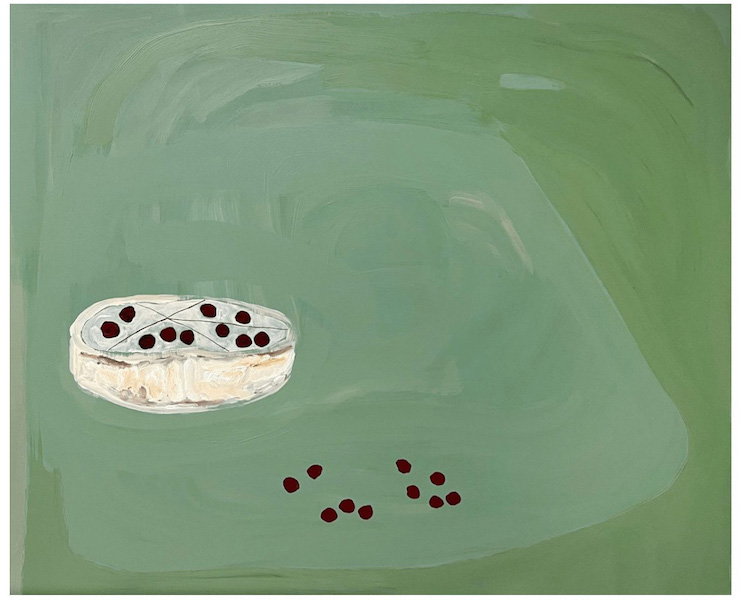
Layers And Experience
Clare Gemima: I wanted to extend my congratulations on your recent solo show at Silke Lindner, What I Want. Much like the two pieces currently at Abattoir, the oil, acrylic, and graphite paintings you showcased there incorporated a variety of images, patterns, and abstract elements. An intriguing aspect is how the layers of these compositions interact and blur together once the paintings are complete. I'm curious as to whether there is a sense of intimacy between each layer before they coalesce?
AZ: I think something I love about making paintings is the breadth of different relationships layers or images can have with one another. Given that I work by building up several washes and layers to come upon a final image, there is a lot of room for exploring different dynamics between these layers. Sometimes, it feels like the most exciting paintings have layers that erode, obscure, or create dissonance with each other. I'm interested in generating harmonies and tensions that become embedded in a final form. But to me, this also speaks to the time-based nature of the painting process. An image constantly shifting, eluding me until it "stops." I think there is something very intimate about this aspect of the work - more psychologically than physically. Sometimes, I like making a painting and, at the end, adding a layer that "doesn't care" - or operates in a different logic from the ones beneath it.
Clare Gemima: In Definition of a Fragment, as well as in some of your other acrylic and oil works, such as: Oh creature, my creature (2023) and Not all water's blue, not all greens aren't (2022), there's a notable theme of cropping and zooming into your subjects. Whether it's cherries atop a cake, a creature's head on a plate, or the detailing of a flying horse carousel, you seem to be drawn to portraying these objects, animals, or foods from a very close perspective. What motivates you to explore and render with such proximity to these subjects?
JC: I believe this touches on my previous point of the inability to accurately recreate an experience and the impossibility of doing so, which, in turn, promotes the flexibility of storytelling. I will often hone in on an object that specifically speaks to me and remove all of its relatable surroundings because, at a certain point, those memories shift. We begin to reassociate the 'what,' 'where,' and even the 'who,' pairing previously unassociated elements together to form new relationships. I'm interested in the specific details of an experience that we carry with us, those that we decide to discard, and the new connections created when they are recalled.
Other exhibiting artists include: Amani Williams, Audra Skuodas, Chen Peng, Emily Bartolone, Jen P. Harris, Laura Ruth Bidwell, Mamie Tinkler, Nydia Blas, Roger White, Scott Olson, Shaun Pierson, Sophie Schwartz, and TR Ericsson.
The exhibition On Intimacy will be on view at Abattoir Gallery in Cleveland, Ohio until April 14th, 2024.
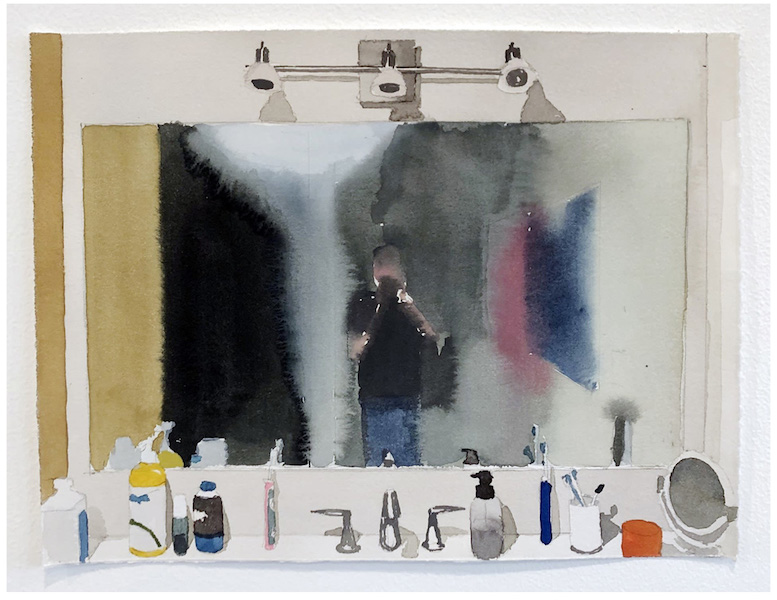
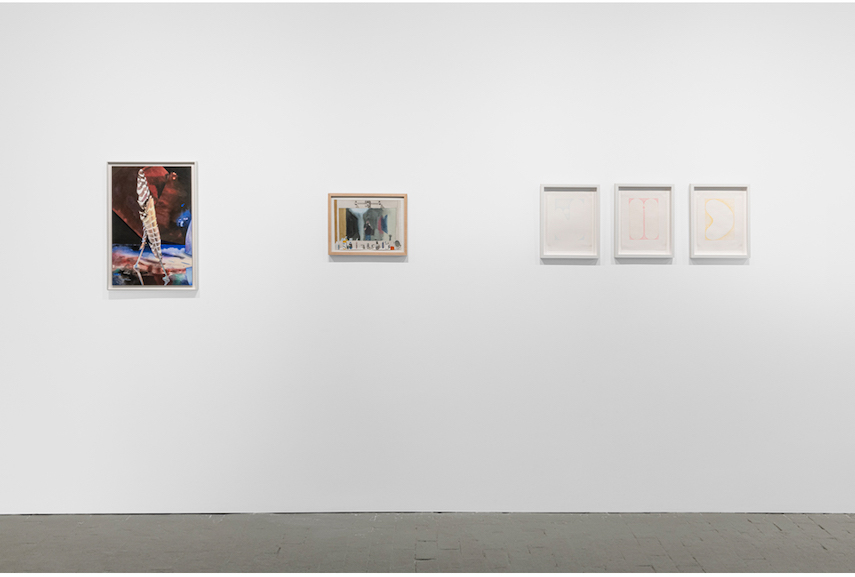
Featured image: Installation view. [L-R] Carmen Winant - A woman in the shape of a monster, a monster in the shape of a woman 5, 2023. Rubbed magazine pages, ceramic artist frame; 12.5 x 9.5 in. / Carmen Winant - A woman in the shape of a monster, a monster in the shape of a woman 11, 2023. Rubbed magazine pages, ceramic artist frame; 12.5 x 9.5 in. / Carmen Winant - A woman in the shape of a monster, a monster in the shape of a woman 10, 2023. Rubbed magazine pages, ceramic artist frame; 12.5 x 9.5 in. Photo courtesy of Field Studio.


